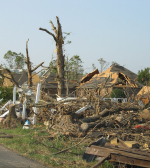
Lockdown isn’t easy. Let’s get that out of the way first. For some on social media it’s about using this new-found time for learning, personal growth, proving to themselves and others their ability to make lemons into lemonade. Or sourdough. Or banana bread. And if that’s you, I’m delighted for you. But it’s not everyone.
Some are working harder and longer than ever, while home-schooling kids, shielding relatives and doing what they can for colleagues and neighbours. Some, like my friends at St John Ambulance, and many others like them, are under career-defining levels of pressure and having to make some of the toughest calls any non-profit leader will ever have make.
And increasingly, all of us are having to work around personal challenges and unexpected team dynamics that are adding to the tension. Most of us recognise our colleagues are under pressure, but few of us have taken the time to step back, and properly understand what’s really going on, and what we need to do about it.
One of the most-cited research papers about the psycho-social impact of crises was produced by Zunin and Myers (Phases of Disaster, 1992) in which they identified distinct phases: impact, heroic response, honeymoon, disillusionment, reconstruction and recovery. Their chart, which has been adapted and included in handbooks and manuals ever since, shows the emotional highs and lows – the energy levels people exhibit as they move through these phases.
We’ve seen the high energy of the initial heroic response, like the miners at Aberfan showed in 1966, reflected recently, not just in communities responding to lockdown, but also in how rapidly many charities rolled out remote-working and safety procedures; some delivering 18-months of planned development in less than a week.
We’ve seen the honeymoon phase, of running on adrenalin, rolling up the sleeves and making big, bold decisions around furloughing, stopping programmes, repurposing people and buildings and so forth, all powered by a combination of acute “eustress” (positive stress), and the recognition that: “we have no choice, we simply have to do it”.
And many of us, whether we like it or not, because this is what happens, are now moving into the chronic stress phase; the phase Zunin and Myers dubbed disillusionment. That description doesn’t help, because most of us wouldn’t describe ourselves as disillusioned – we’re still as committed as ever – but there’s an appreciation this will be a difficult road, and above all, a realisation that for some of us, keeping up our energy, keeping our emotions together, is becoming harder.
The idea that we now find more energy to rebuild is daunting, because we’re already starting to feel exhausted. And there’s a reason for that.
We all have our own, unique personality profile. Whether extrovert or introvert, open or closed, agreeable or disagreeable (to quote three from the Five Factors Model) – these are what psychologists describe as enduring traits. They don’t define who we are, per-se, because as we mature and develop through management and leadership roles, we all learn to modify our behaviour – those of us who are naturally disagreeable learn how to compromise, or at least land tough messages with compassion. Conversely, our more agreeable colleagues learn how to fire difficult people, or at least how to say, “you’ve got two days to sort this out”.
But acting outside of our default traits takes energy. An extrovert hosting or presenting to a crowd gains energy. An introvert steps off the stage proud but exhausted. And in normal times, we all have strategies, often subconscious habits built over the years, for recharging the energy that enables us to moderate our less-helpful traits. A quiet commute or taking lunch alone with the phone switched off; or conversely, a walk around the office, informal banter in the canteen, drinks after work.
But for many of us right now, those strategies, that emotional scaffolding, is largely gone. An introvert switching between back-to-back Teams calls, before trying to get three kids off the Xbox and onto their maths work, with no commute in between, is as bereft of the recharging opportunity as an extrovert who’s entire social life is reduced to twenty seconds of “how was your weekend” at the start of each call, and a virtual pub quiz on a Friday night.
So, how can we find the energy to rebuild?
As much as I would love to give a one-size fits all solution, the solution to this energy crisis will be different for each individual. Some organisations are limiting formal meetings to no more than 40, sometimes 20 minutes in an hour. Some have parallel WhatsApp or Slack chats while meetings are happening as a channel for less formal interaction. One of my clients has hired a “Zoom Magician” (yes, there really are magicians who perform over Zoom) as one of an array of informal socialising tools.
The point is, there are ways to recharge, both individually and collectively, even in lockdown.
The most important first step though, for all of those things, is awareness. Awareness of how this unique situation is affecting people in different ways; of how it’s affecting energy, outlook and behaviour and in turn, how that’s likely to be affecting team dynamics. Even if you’re personally not being affected (and you probably are), there are people around you who will be.
Of course, the flip-side to all of this is, if you can help your people build new scaffolding, new routines and habits, new ways to recharge, energise and breathe positivity back into your organisation now, at this very worst of times, your organisation, your team, and you as an individual, will all come out of this far stronger, more adaptable and more resilient than you ever were before.
Even if you still can’t make sourdough.
